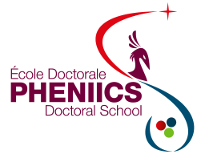Orateur
M.
Amar Boukhari
(CNRS)
Description
PHENIICS School
Research thematic: nuclear physics.
Laboratory: Centre de Sciences Nucléaire et de Sciences de la Matière (CSNSM)
Thesis director: Georgi Georgiev
Amar Boukhari
1st year of PhD
amar.boukhari@csnsm.in2p3.fr
Title: Structure of exotic nuclei. Spin-oriented radioactive beams for nuclear moment and beta-decay
studies.
The study of the subatomic world started with the study of the stable nuclei. We found this kind of nuclei on earth, forged by stars several billion years. These nuclei are in equilibrium, their cohesion is such that no radioactive transmutation is possible.
The main interest of the contemporary nuclear structure is focused nowadays on the properties of the nuclei far from the stability line (exotic nuclei) where phenomena are being observed. For example, modifications of the nuclear shell structure are observed at extreme proton-to-neutron ratios. This brings in variations in the nuclear magic numbers well established around the valley of stability.
When discussing a possible modification of the nuclear shell structure far from stability, important ingredients are the purity of the nuclear wave functions and the shape (deformation) of the nuclei. Those two can be experimentally approached through nuclear moment studies. The magnetic dipole moment is very sensitive to the proton/neutron character of the valence nucleons and the purity of the wave function. The electric quadrupole moment is the experimental observable that can give the closest indication to the deformation and the shape of a nuclear state.
The experimental determination of nuclear moments requires the investigation of ensemble of spin-oriented nuclei. Different methods could be applied in order to obtain those spin-oriented ensembles, depending on the lifetime of the state of interest.
For example, ground-state nuclear orientation for neutron-rich nuclei could be obtained using the Tilted Foils Technique (TFT). It has already been tested after REX-ISOLDE and will be applied for magnetic moment studies of the 127,129In nuclei in the vicinity of the 132Sn. This should allow to shed light on the nuclear structure around this doubly-magic nucleus.
For shorter-lived nuclear states, the spin-orientation is usually obtained in the reaction mechanism that populates the state of interest. An experiment has been carried out at ALTO (Orsay) in order to investigate the level of spin-orientation in incomplete fusion reactions like (7Li,αpn) and (7Li,αn). The 7Li beam was sent to a 64Ni target in order to produce microsecond isomeric states in 65Ni and 66Cu. The gamma-rays from the decay of those isomers were detecting using the Ge detectors from the ORGAM array. The results of this experiment will be presented and the obtained spin-orientation will be discussed.
Auteur principal
M.
Amar Boukhari
(CNRS)



